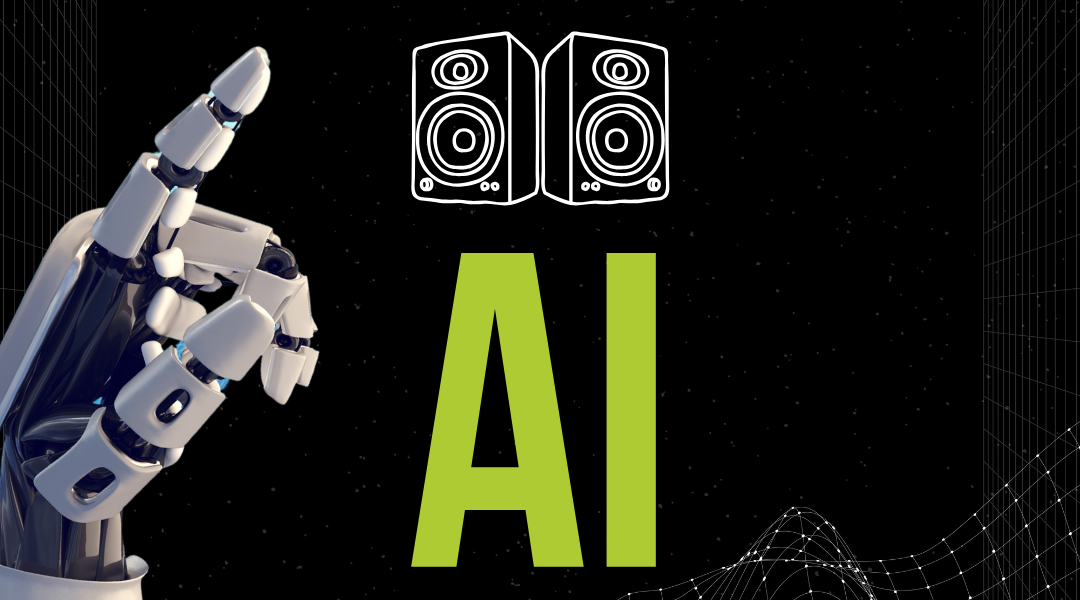AI in Audio: What’s Real and What’s Hype?
27/03/2025

Artificial Intelligence (AI) is transforming industries worldwide, with rapid advancements in self-learning assistants and AI-driven content creation. But what does all this mean for the audio industry? How is AI shaping the future of smart audio devices, and what’s realistically possible today? With over a decade of experience in voice assistant technology and 20 years in system integration, AI-driven technology is nothing new to us. As it continues to evolve, we see new opportunities to enhance sound quality, personalization, and user interaction.
With so much excitement about AI lately and most new feature being labeled as “AI-powered,” it’s important to cut through the noise and focus on where AI really makes a difference. Here are the use cases where we see true value from integrating AI:
Generative AI vs LLMs: Distinct Roles in Audio Technology
Generative AI and Large Language Models (LLMs) are at the core of many AI advancements today, shaping how machines create and understand content. While Generative AI and LLMs are often put under the same umbrella, they serve distinct roles in the audio industry. Generative AI refers to AI models that create new content, including synthetic voices, AI-composed music, and sound effects. These models generate fresh audio content, often leveraging deep learning techniques. LLMs, on the other hand, specialize in understanding and generating human-like text. In audio applications, LLMs power voice assistants, enhance chatbot interactions, and improve transcription accuracy by processing and responding to natural language.
How We Drive AI Integration in the Audio Industry
In the audio industry, AI extends beyond conversations. AI in embedded audio devices focuses on real-time processing, enhanced sound quality, smart personalization, and optimized user interactions. It enables features like improved voice control, intelligent playlist recommendations, and dynamic audio enhancements based on environmental conditions. At StreamUnlimited, we’ve been actively exploring AI integration for smart audio devices for over 10 years now. While the core AI principles remain the same, today’s landscape demands the integration of diverse AI models tailored to specific applications, further improving different aspects of audio technology:
- AI-Powered Smart Audio Post-Processing
We are actively collaborating with ecosystem providers to integrate AI-driven enhancements into next-generation smart audio solutions. One exciting area is AI-powered smart audio post-processing. By analyzing room acoustics and listener positioning, AI can dynamically enhance sound quality, creating an optimized “sweet spot” for listeners. This is particularly valuable in high-end audio systems, where users expect immersive and adaptive sound experiences. - Voice Assistants and Natural Language Processing
Another major focus is voice assistants and natural language processing. As we’ve integrated Google Assistant, Alexa, Siri, and LLM-powered AI assistants, we’ve observed the evolution of voice interaction becoming more fluid and context-aware. AI is transforming voice control into a deeply integrated tool for interacting with smart audio devices or controlling IoT-enabled devices. - Content Personalization, Genre Detection, and Smart Playlist Generation
Beyond user interactions, AI plays a key role in content personalization. Genre detection and smart playlist generation allow streaming services and audio brands to tailor experiences based on user preferences. AI models analyze audio characteristics to identify genres, moods, and user habits, helping curate recommendations that feel intuitive and natural. This level of personalization enhances customer engagement, making streaming services smarter and more relevant to each listener. - Voice Enhancements and Noise Reduction
Another breakthrough application is AI-powered voice enhancement and noise reduction. Advanced AI algorithms can now improve speech clarity, reducing background noise in real-time. This is essential for hands-free communication, conference calls, and voice-controlled assistants in noisy environments, where clarity is crucial. - Endless Audio in Commercial Settings
AI-powered features like Endless Audio significantly enhance the dynamic soundscape in environments like shopping malls, hotels, and office spaces by enhancing the soundscape and enriching the experiences of both customers and employees. By intelligently adapting to changes in environmental conditions and audience presence, Endless Audio ensures a consistently engaging and relevant auditory experience.
Flexible AI Integration for Every Use Case
Every product has unique AI integration requirements, and a one-size-fits-all approach doesn’t work. That’s why we offer flexible AI integration approaches: Edge, Hybrid, and Cloud integration. Whether a product requires on-device AI processing for ultra-low latency, a hybrid approach for balancing performance and cloud costs, or cloud-based AI models for maximum performance, we provide scalable solutions to meet specific product needs. Hybrid AI combines local processing with cloud capabilities, offering the best of both worlds. Our adaptable solutions allow us to implement AI for brands in a way that best fits their hardware, software, and user experience goals.
AI Integration at Scale
At StreamUnlimited, we are prepared to integrate AI across different audio applications. Our flexible approach allows brands to leverage AI models tailored to their specific products, improving performance without increasing hardware costs. With a solid AI integration, companies can deliver better user experiences and introduce new audio features that differentiate their products from the competition.
AI in smart audio it’s all about enhancing audio experiences. As new AI models emerge, we are continuously working on integrating and refining AI solutions to make audio products smarter, faster, and more immersive.

